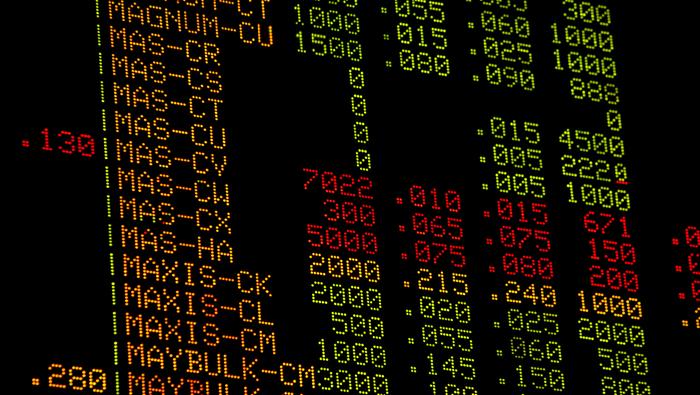
Pullback entry
A market's pullback is when it moves back toward a trend's start point. Depending on the trend, a pullback may be either deep or shallow. You can spot this by using indicators such as moving averages and Fibonacci levels. Your decision will be more reliable if you have more signals.
A pullback is part of any uptrend. It can happen due to a sudden drop, profit taking, or negative news regarding the underlying stock. Trader who follows a trend often uses pullbacks to increase or decrease their long positions. You can use buy limit orders, stop buy entry orders, and market orders to enter at these times.
Breakout strategy
A breakout strategy in trading is vital. It allows traders who are not in the range of the price to enter a trade. The objective of this strategy is to capitalize on the upcoming trend rather than waiting for a longer-term trend to develop. Trading strategies that are more effective than price patterns will often be better for traders.

Breakouts usually occur near designated resistance trend lines. However, a failed breakout usually happens when key breakout levels don't hold and price loses momentum. It is important to know the time period that the breakout will last. Trader should also be able to identify the profit or risk levels for each trade. Ideal trader should take the same risk as what they plan to make.
Day trading involves risks
Day traders are often forced to make split-second judgments, rather than long-term investors. They must be aware of market trends, economic indicators, and news cycles. They should also be able to understand the intricacies of particular products and industries. Investors can either make large profits or lose it all. Day traders might also face margin calls that can result in them losing their money.
Day trading presents one of the greatest risks. You need to be able to focus on the price movements of many stocks. If traders can't control their stress, they may make mistakes. When making investment decisions traders should avoid emotional reactions. You can also use the buy-and-hold strategy. This involves looking at different companies and then choosing the best one.
Strategies used
There are many day trading strategies to choose from, but one of the most popular is the gap and go strategy. This strategy seeks stocks with a steady uptrend and moderate retracements. Finding a low risk entry price is crucial to making a trade work. The best way to do this is to use indicators such as trendlines and moving averages. At the start of a trade, the risk-reward ratio should be around 1:1.

Day trading strategies are a great way to reduce risk and maximize your profit. After you have chosen a strategy, it's time to choose which instruments to trade. You have the option to choose between stocks, ETFs or futures.
FAQ
What is an REIT?
A real estate investment trust (REIT) is an entity that owns income-producing properties such as apartment buildings, shopping centers, office buildings, hotels, industrial parks, etc. They are publicly traded companies which pay dividends to shareholders rather than corporate taxes.
They are similar to a corporation, except that they only own property rather than manufacturing goods.
What is a Bond?
A bond agreement is an agreement between two or more parties in which money is exchanged for goods and/or services. It is also known by the term contract.
A bond is usually written on a piece of paper and signed by both sides. The document contains details such as the date, amount owed, interest rate, etc.
A bond is used to cover risks, such as when a business goes bust or someone makes a mistake.
Sometimes bonds can be used with other types loans like mortgages. This means the borrower must repay the loan as well as any interest.
Bonds can also raise money to finance large projects like the building of bridges and roads or hospitals.
When a bond matures, it becomes due. This means that the bond owner gets the principal amount plus any interest.
Lenders are responsible for paying back any unpaid bonds.
Are bonds tradeable?
Yes, they are. As shares, bonds can also be traded on exchanges. They have been trading on exchanges for years.
The difference between them is the fact that you cannot buy a bonds directly from the issuer. They can only be bought through a broker.
It is much easier to buy bonds because there are no intermediaries. This also means that if you want to sell a bond, you must find someone willing to buy it from you.
There are several types of bonds. Some bonds pay interest at regular intervals and others do not.
Some pay quarterly, while others pay interest each year. These differences make it easy to compare bonds against each other.
Bonds are very useful when investing money. For example, if you invest PS10,000 in a savings account, you would earn 0.75% interest per year. If you were to invest the same amount in a 10-year Government Bond, you would get 12.5% interest every year.
If all of these investments were accumulated into a portfolio then the total return over ten year would be higher with the bond investment.
How are securities traded
The stock market allows investors to buy shares of companies and receive money. In order to raise capital, companies will issue shares. Investors then purchase them. Investors then sell these shares back to the company when they decide to profit from owning the company's assets.
The price at which stocks trade on the open market is determined by supply and demand. The price rises if there is less demand than buyers. If there are more buyers than seller, the prices fall.
There are two methods to trade stocks.
-
Directly from your company
-
Through a broker
Why is a stock security?
Security is an investment instrument whose value depends on another company. It could be issued by a corporation, government, or other entity (e.g. prefer stocks). The issuer promises to pay dividends to shareholders, repay debt obligations to creditors, or return capital to investors if the underlying asset declines in value.
What is a Stock Exchange?
Companies sell shares of their company on a stock market. This allows investors to buy into the company. The market sets the price for a share. The market usually determines the price of the share based on what people will pay for it.
Companies can also get money from investors via the stock exchange. To help companies grow, investors invest money. This is done by purchasing shares in the company. Companies use their money in order to finance their projects and grow their business.
There can be many types of shares on a stock market. Others are known as ordinary shares. These are most common types of shares. These are the most common type of shares. They can be purchased and sold on an open market. Shares are traded at prices determined by supply and demand.
Preferred shares and debt security are two other types of shares. When dividends are paid, preferred shares have priority over all other shares. These bonds are issued by the company and must be repaid.
Statistics
- Ratchet down that 10% if you don't yet have a healthy emergency fund and 10% to 15% of your income funneled into a retirement savings account. (nerdwallet.com)
- Even if you find talent for trading stocks, allocating more than 10% of your portfolio to an individual stock can expose your savings to too much volatility. (nerdwallet.com)
- "If all of your money's in one stock, you could potentially lose 50% of it overnight," Moore says. (nerdwallet.com)
- Our focus on Main Street investors reflects the fact that American households own $38 trillion worth of equities, more than 59 percent of the U.S. equity market either directly or indirectly through mutual funds, retirement accounts, and other investments. (sec.gov)
External Links
How To
What are the best ways to invest in bonds?
A bond is an investment fund that you need to purchase. They pay you back at regular intervals, despite the low interest rates. You make money over time by this method.
There are many options for investing in bonds.
-
Directly buying individual bonds
-
Buy shares from a bond-fund fund
-
Investing through a bank or broker.
-
Investing through a financial institution
-
Investing in a pension.
-
Invest directly through a broker.
-
Investing in a mutual-fund.
-
Investing through a unit trust.
-
Investing with a life insurance policy
-
Investing with a private equity firm
-
Investing in an index-linked investment fund
-
Investing via a hedge fund